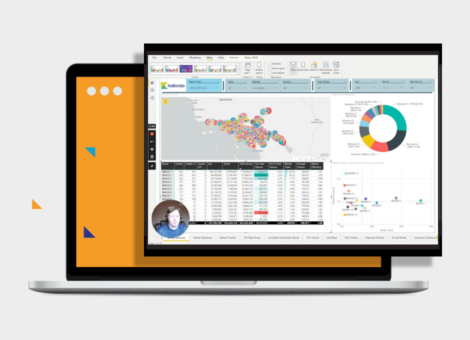Creating a solid hiring process for gas stations
Kalibrate recently held a Q&A webinar for smaller independent fuel retailers to advise on how to maintain and increase profitability. Time and time again, Kalibrate’s experts, Alexia Field and Elena Lau, stressed the importance of having a good team to execute your tactics.
“Hiring the right people is hard, and keeping them is an art form.” — Elena Lau
Here, Elena explains why you need a solid, repeatable hiring process and explains how this has helped her in past roles.
In previous posts, we’ve discussed the importance of maintaining a great image outside your lot and inside your convenience store. But none of that matters without good execution — and for this, you need a killer team.
You could have the most sought after product in the world, but if it’s in the backroom and not on the shelf, you’re not going to be able to sell it, and you’re not going to be able to up-sell it. Execution is everything.
Hiring the right people is an art. And retaining those people after you’ve hired them is really hard. You need to be intentional about it.
Why do you need a hiring process?
The average turnover in the c-store industry is usually over 100%, with 9 out of 10 employees quitting without notice. NACS reports that average turnover in 2020 was 123%.
It is strongly recommended that you develop and implement a hiring process. This is a complete process from A-Z. From identifying what your personnel needs are, to advertising, to interviewing and beyond.
Start with regular interviews
Elena’s advice is to interview regularly — every week if you can. Even if you don’t need a new employee right now, get into the habit of interviewing so that when you do need someone, you won’t be in a rush to hire the first person that walks through the door.
Elena explains:
“When you manage a gas station, which I did for many years, you quickly figure out that you can spend 1-2 hours interviewing a week or end up working 70-80 hours long work weeks, most of it to cover shifts last minute, including overnights and weekends.”
Interviewing regularly will enable you to feel more comfortable with the interviewing process firstly, and secondly, to compare people objectively and gain a better understanding of what and who you’re looking for. Then when the time comes, you’re likely to have a candidate in mind for the role and won’t need to spend weeks being understaffed and paying extra for overtime, and you won’t need to rush to hire someone who might not be correct.
Remember, hire for attitude not for skills. You can teach skills but you’ll struggle to change someone’s attitude.
Regular interviews make life better for your existing staff too. Make it clear what you’re doing and why. Your staff don’t need to worry that they’ll be replaced, if you explain the process to them, they’ll appreciate that you’re supporting the store’s needs and ensuring no one is overwhelmed or overworked.
“Once I started interviewing weekly, I was never in a rush to choose just a body. I always had 1-2 people in mind that I have vetted and had time to check references. My employees knew what I was doing and appreciated it. Even though not my first intention with this process, my employees also knew that I could afford to set high expectations and hold everyone to them, so they kept up with my expectations.”
“Following this process allowed me to have the highest performing teams in every role, consistently. 100% of the people in my last two teams were promoted to higher positions. There is, of course, a lot more involved between hiring and getting someone to excel in their career — but it all starts with hiring the right person for the job.”
Think about introducing a referral process. Your current employees may know someone who’d be perfect for your team, and paying them a small referral bonus could be far cheaper than advertising vacancies elsewhere.
Once you’ve found the right candidate, create an on-boarding process. What do they need to learn and when? Who is best placed to mentor and teach them? How will you give them feedback?
Where to get help and advice
If you don’t have a hiring process, you don’t need to pay a consultant to create one for you. The US Small Business Administration (SBA) runs multiple training sessions and events that are often free or less than $30, which can help with all aspects of employee management. Take advantage of these whenever you can, they’re a great way to learn from the SBA’s trainers and advisors, as well as other business owners on the course too.
Keeping the staff you have pays off
Hiring is expensive. You’re paying overtime while you look for a replacement, you’re paying advertising costs, you’re spending time interviewing. And training is expensive ― your team is under additional pressure as a new recruit learns the ropes. So retaining the staff you have will save you money. But more than that. Your customers will notice. They want to see a familiar face in their local store, and the bond and relationship between customers and staff will keep bringing people back to your store.
To keep the right people, you need to be intentional in your efforts. There’s an excellent book by Paul L. Marciano called Carrots and Sticks don’t work, which is full of ideas for how to make sure your employees feel valued and engaged. And most of them don’t cost a penny to implement. Telling an associate: “Great job on stocking the cooler, and by the way, I noticed you mopped the floor without me asking you. I appreciate you” does not cost a thing. The teachings in this book, paired with a structured performance review process, will help you keep the right people.
Being intentional in your efforts to keep your associates is often undervalued. A long-term associate not only takes ownership of their store and creates a relationship with your repeat customers but also saves you money and will build you a stronger team.
Watch the full “Maintaining and increasing profitability” webinar on-demand
to hear Elena and Alexia discuss how to decrease labor costs without cutting staff and how to manage your inventory better. They’ve got some great advice on how to compete with the large fuel retailers.
Read more articles about:
Location intelligenceSubscribe and get the latest updates
You may unsubscribe from our mailing list at any time. To understand how and why we process your data, please see our Privacy & Cookies Policy
Related posts
Fuel pricing
Maintaining and increasing profitability — on demand
In this live Q&A Rianne McBride invites two of Kalibrate's experts, Elena Lau and Alexia Field, to share...

Uncategorized
How improved customer service can drive more revenue from your gas station
Customer service has always been an important part of a consumer’s experience. But in today’s post Covid society,...

